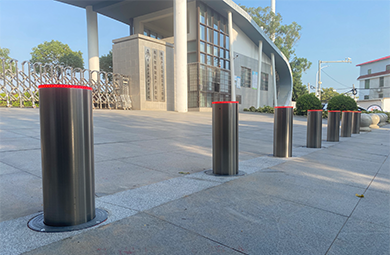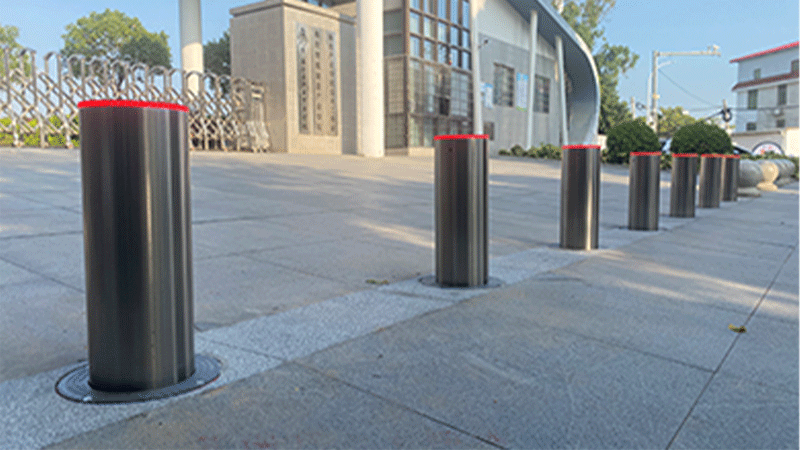Home > Company News > Why we install automatic bollards for our house and Villa?
-
 Chris UPARK
Welcome to my shop, I'm glad to serve you. Please feel free to send me any questions you may have.
Chris UPARK
Welcome to my shop, I'm glad to serve you. Please feel free to send me any questions you may have.
Your message has exceeded the limit.
Company News

Automatic bollards, also known as retractable or rising bollards, offer several benefits for various applications, including traffic control, security, and access management.

Here are some of the key advantages of automatic bollards, along with information on how to install them:
The benefits of Automatic Bollards:
Access Control: Automatic bollards are effective in controlling vehicle access to certain areas. They can be raised or lowered to allow or deny entry, making them useful for controlling traffic flow in restricted zones or secure areas like government buildings, commercial properties, and pedestrian zones.
Security: These bollards enhance security by preventing unauthorized vehicles from entering secure locations. They are often used at critical infrastructure sites, such as airports, embassies, and military installations.
Versatility: Automatic bollards come in various sizes and designs, making them suitable for a wide range of applications. Some can be designed to complement the architectural style of the surrounding area.
Safety: Automatic bollards can improve safety by preventing unauthorized vehicles from entering pedestrian zones, protecting pedestrians from potential harm.
Traffic Management: They are useful for managing traffic in urban areas, helping to reduce congestion and ensure vehicles follow designated routes.
Low Maintenance: Well-maintained automatic bollards are durable and have a long lifespan. They are typically made from strong materials such as steel or stainless steel.
Installation of Automatic Bollards:
The installation of automatic bollards requires careful planning and professional expertise to ensure they function effectively and safely. Here's a basic guide to the installation process:
Site Assessment: Conduct a thorough site assessment to determine the exact location and purpose of the bollards. Consider factors like traffic flow, security requirements, and architectural aesthetics.
Permitting and Regulations: Check local regulations and obtain any necessary permits for the installation of automatic bollards. Compliance with safety standards and codes is crucial.
Choose the Right Bollards: Select the appropriate type and specifications of automatic bollards based on your site's requirements. This includes the bollard's size, impact resistance, and control mechanism (hydraulic or electric).
Foundation Preparation: Excavate the installation site and prepare the foundation for the bollards. Ensure that the foundation is properly sized and reinforced to support the weight and impact resistance requirements of the bollards.
Electrical and Control Systems: Install the necessary electrical wiring and control systems to manage the bollards' movements. This may include a control panel, sensors, and communication systems.
Bollard Installation: Place the bollards into the prepared foundations and secure them in place. Ensure they are level and properly aligned.
Testing: Conduct rigorous testing to ensure the bollards function as intended, responding to control commands and safety features like obstacle detection.
Maintenance and Training: Establish a regular maintenance schedule to keep the bollards in working order. Train staff on their operation and maintenance.
Professional installers with experience in automated access control systems and bollards should be employed to ensure the installation is done correctly and meets safety standards and regulations.

